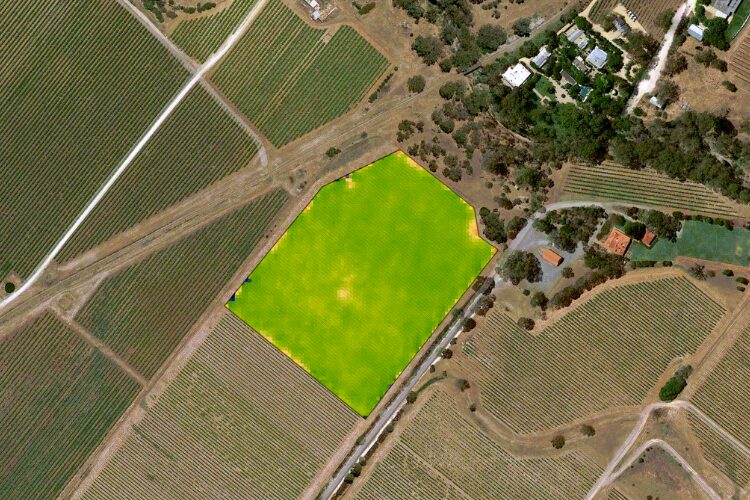Putting pixels into practice
Upscaling to meet demand
In 2019 SWAN Systems, an irrigation operations company, discovered they had a complex business issue; they needed to upgrade their processing power and data download to better serve their expanding customer base. With heavy reliance upon satellite data and ambitions to become an international company—SWAN Systems began to look at options for up-scaling to meet demand. We had a discussion with Ivor Gaylard, COO and Co-Founder from SWAN Systems to hear first hand how NGIS was able to assist in solving their challenge.
From the inception of SWAN Systems, operations have always involved the use of sentinel data, which soon became less suitable for the capability required as the business grew to diversify in both geographic location and size. Sentinel data transmits satellite imagery once every five days with a 10 metre pixel resolution; making it less suitable for the needs of the customers, especially those in weather prone areas.
The difficulty with upscaling
Customers have the ability to use Google Earth Engine Imagery to visualise the impact of their watering and nutrient application schemes. Complications arose where the imagery was less suitable for procuring regular and reliable data to show the changes in irrigated areas. So, the team looked into alternatives and came across the Planet data offering, promising data download daily and a 3.7 metre pixel.

It was an easy decision to come back to NGIS when we had an imagery challenge in front of us. We’re happy with the help we got from them in the past and we would certainly come back in the future.
Ivor Gaylard, Swan systems COO and Co-founder.
Improved solutions for irrigation issues
Faced with the challenge of extracting the most value out of Planet data, SWAN turned to its trusted and long term collaborator, NGIS, to ensure the platform made the most of the data available. Having worked with NGIS in the past, SWAN engaged our team to help deliver the Planet integration and technical support in the infancy of the migration. The NGIS team worked closely with SWAN Systems to integrate Planet data, complementing their existing data usage with Google Earth Engine and Sentinel data.
Two things that I feel NGIS stands out for, from my perspective, is with user interface and the user experience. We get good feedback from customers on that.
Ivor Gaylard, Swan systems COO and Co-founder.
The future of sustainable irrigation
Due to Planet’s download quotas, each download instance would cost the company a dollar amount, but neglecting to download data regularly would leave customers without the capability of seeing regular updates on their property. To solve this, NGIS assisted SWAN in calculating how they could understand what volume and regularity of data download they required.
With the addition of Planet data and with support from NGIS, SWAN has allowed for over 150 accounts, with multiple users on each, to better identify their irrigation problems. In turn, this saves users time, money and misspent resources. Since their establishment in 2016, SWAN has grown to attract global clients and win awards for their work in helping to conserve water and the environment. In 2020, the company was announced the AgTech winner of the FoodBytes! pitch competition, a major international startup discovery program. The success of SWAN’s irrigation systems have reached Zimbabwe, with their client Matanuska; Zimbabwe’s largest banana producer. Through implementing SWAN’s technology, Matanuska were able to save approximately 2.6 megalitres of water per hectare, per year—translating to a ROI of seven times the cost of implementing SWAN.
This year SWAN has ambitions to expand their business into the United States and continue helping the irrigated agricultural sector save precious water resources and create a more sustainable future.

